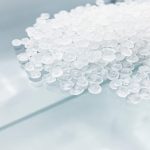In an age where innovation and sustainability drive manufacturing and product development, material scientists are increasingly turning to advanced polymers for solutions. One standout in this transformation is thermoplastic polyimide elastomers (TPIEs). These high-performance materials are redefining the boundaries of what polymers can achieve, especially in environments where conventional materials fall short. From aerospace and automotive to electronics and healthcare, thermoplastic polyimide elastomers are steadily carving a niche and shaping the future of high-performance materials.
In this in-depth blog, we’ll explore why TPIEs are gaining widespread attention, their unique properties, application areas, market trends, and how they contribute to the future of modern engineering.
Understanding Thermoplastic Polyimide Elastomers
Thermoplastic polyimide elastomers are a class of engineering materials that blend the elasticity of elastomers with the durability and thermal resistance of polyimides. These polymers feature a unique molecular structure that incorporates hard aromatic imide segments with soft flexible segments, offering the perfect synergy of mechanical robustness and flexibility.
Unlike traditional elastomers that degrade at high temperatures or under harsh conditions, TPIEs maintain their performance in extreme environments. Their thermoplastic nature also allows easy processing through extrusion, injection molding, and thermoforming, making them cost-effective and production-friendly.
Key Properties of Thermoplastic Polyimide Elastomers
- Heat Resistance: Capable of withstanding temperatures up to 250°C and beyond.
- Chemical Resistance: Resistant to fuels, lubricants, acids, and solvents.
- Lightweight: High strength-to-weight ratio ideal for lightweighting.
- Flexibility: Retains elasticity and flexibility at high and low temperatures.
- Dimensional Stability: Maintains structure under thermal cycling.
- Low Outgassing: Crucial for aerospace and vacuum applications.
The Driving Forces Behind the Adoption of TPIEs
As industries evolve and face new challenges, there is growing demand for materials that can deliver multifunctionality. Thermoplastic polyimide elastomers check nearly every box for sectors that require high endurance and performance.
- Performance in Extreme Conditions
Traditional elastomers often fail in extreme temperature or chemically aggressive environments. TPIEs, on the other hand, are engineered to excel in these conditions. Their ability to function effectively across wide temperature ranges makes them ideal for aerospace engines, automotive under-the-hood components, and electronic systems.
- Lightweighting and Fuel Efficiency
In sectors such as automotive and aerospace, reducing component weight is a top priority for improving fuel efficiency and reducing emissions. Thermoplastic polyimide elastomers offer a lightweight alternative to metals and traditional plastics without compromising on strength. The shift toward lightweight materials is one of the main drivers behind the increasing use of TPIEs.
- Sustainability and Compliance
Modern manufacturers are under pressure to reduce their environmental footprint and comply with stringent regulations such as RoHS and REACH. TPIEs are inherently more sustainable, with recyclable properties and long life spans that reduce waste and resource consumption. Some newer versions of these elastomers are derived from bio-based monomers, pushing the sustainability envelope further.
Emerging Applications Across Industries
The versatility of thermoplastic polyimide elastomers makes them suitable for a broad spectrum of applications. Let’s delve into how various industries are incorporating these polymers to achieve higher efficiency, safety, and sustainability.
- Aerospace and Defense
The aerospace sector was one of the earliest adopters of polyimide-based materials. TPIEs are used in:
- Thermal insulation
- Flexible fuel hoses
- Wire and cable jacketing
- Seals and gaskets for high-temperature zones
Their low outgassing, fire resistance, and mechanical integrity make them ideal for aircraft and spacecraft applications.
- Automotive Engineering
With the push for electric vehicles (EVs) and reduced carbon emissions, TPIEs are being deployed in:
- Battery module insulation
- Cable sheathing
- Under-the-hood components
- Sensor housing and sealing systems
Their heat resistance and chemical resilience ensure longevity and reduced maintenance costs.
- Electronics and Semiconductors
As devices shrink and demand more power, heat management becomes critical. TPIEs are used in:
- Flexible printed circuit boards (FPCBs)
- High-temperature connectors
- Dielectric insulation materials
Their excellent dielectric properties and thermal endurance are key to electronic reliability and miniaturization.
- Healthcare and Biomedical Devices
In the medical field, materials must meet stringent safety, biocompatibility, and sterilization requirements. TPIEs are increasingly used in:
- Catheters
- Tubing
- Surgical tools and flexible components
These elastomers withstand radiation, sterilization cycles, and bodily fluids, ensuring performance and safety.
Market Drivers:
- Rising demand for lightweight and durable materials
- Growth of electric vehicles and smart devices
- Increasing aerospace investments
- Regulatory push for sustainable manufacturing
Regional Insights:
- North America and Europe are leading in R&D and early adoption.
- Asia-Pacific, particularly China, Japan, and South Korea, is seeing rapid industrial growth and polymer integration.
With expanding end-use sectors and increasing emphasis on sustainability, the TPIE market presents lucrative opportunities for material suppliers and OEMs alike.
Challenges to Wider Adoption
Despite their many benefits, thermoplastic polyimide elastomers are not without limitations.
- High Production Costs
The complex synthesis and high-quality raw materials involved in making TPIEs contribute to their premium pricing. However, as production scales and new technologies emerge, costs are expected to reduce.
- Limited Processing Knowledge
Many manufacturers are still unfamiliar with the unique processing requirements of TPIEs. This calls for training, education, and collaboration between material suppliers and processing units.
- Availability and Standardization
Unlike more established polymers, TPIEs have limited standardized grades available in the market. More material variants and certifications will help boost confidence and usage in sensitive applications.
The Future: Innovation and Integration
The future of high-performance materials lies in smart design, sustainability, and multi-functionality. Thermoplastic polyimide elastomers align perfectly with these future goals. Here’s how:
- Smart Materials
Integration of sensing, self-healing, or conductivity properties into TPIEs is under active research. This could lead to multi-functional components used in wearables, smart textiles, and aerospace monitoring systems.
- 3D Printing Applications
There is growing interest in adapting TPIEs for additive manufacturing, particularly in aerospace and biomedical prototyping. This will open new design possibilities and customization options.
- Hybrid Composites
Combining TPIEs with carbon fiber, aramid, or other advanced materials can create superior composites with unmatched performance for motorsports, aviation, and defense applications.
- Regulatory Alignment
As global regulations become more environmentally stringent, TPIEs’ recyclability and long service life position them as ideal candidates to replace traditional plastics and rubbers.
Conclusion: A Material Designed for the Future
In conclusion, thermoplastic polyimide elastomers are more than just another category of polymers. They represent a future-forward class of high-performance materials that respond to today’s most critical challenges: heat resistance, lightweighting, sustainability, and multifunctionality.
Whether in the sky, under the hood, on a circuit board, or inside a medical device, TPIEs are proving their worth across multiple demanding applications. With ongoing research, market acceptance, and integration into smart manufacturing systems, thermoplastic polyimide elastomers are poised to become the cornerstone of next-gen material solutions.
For a comprehensive market analysis, emerging trends, competitive landscape, and forecast insights, explore our detailed research study on the Thermoplastic Polyimide Elastomers Market report by Vantage Market Research.
![[Market Research Reports] – Research Google News Blog | VMR.Biz](https://www.vmr.biz/wp-content/uploads/2022/12/logo-removebg-preview.png)











